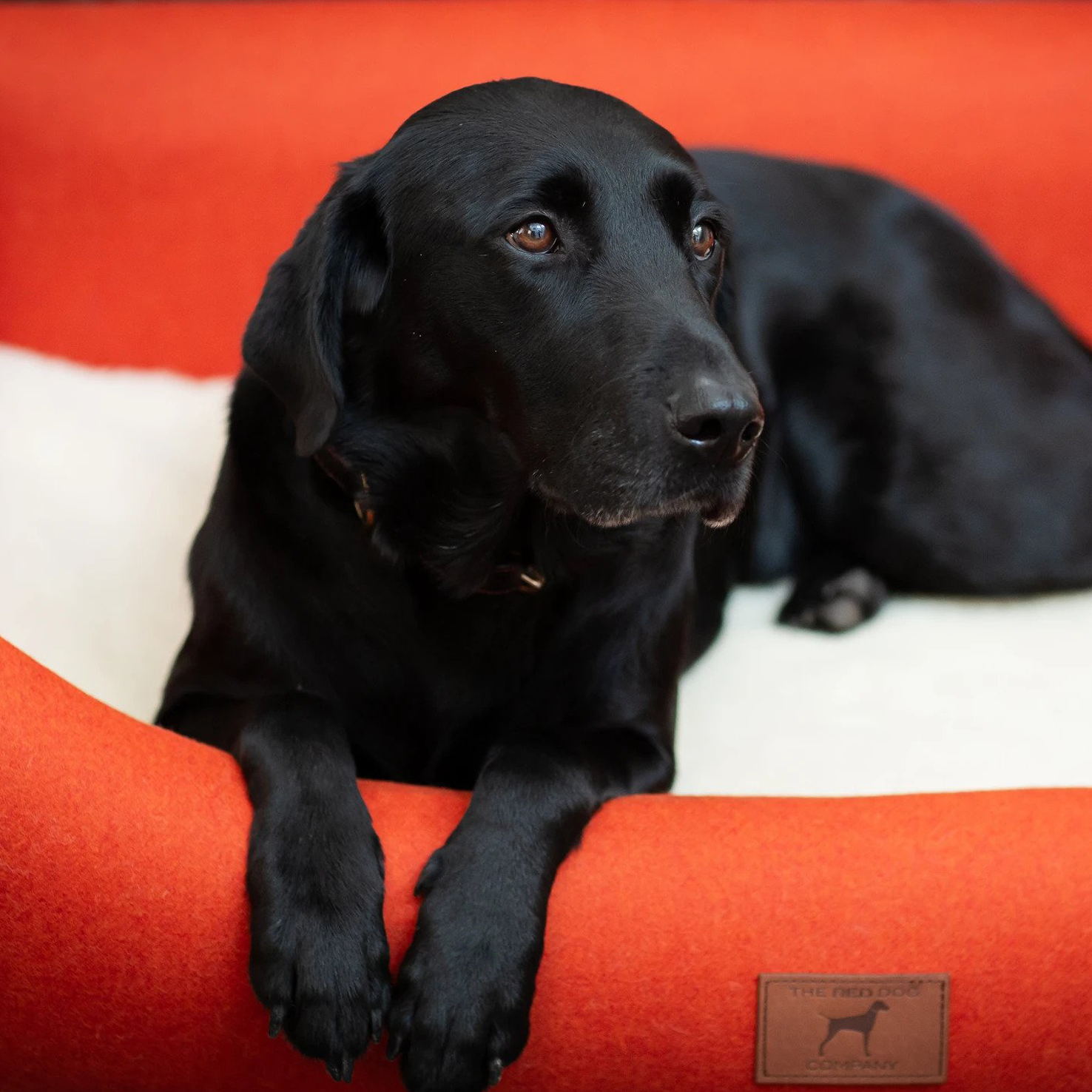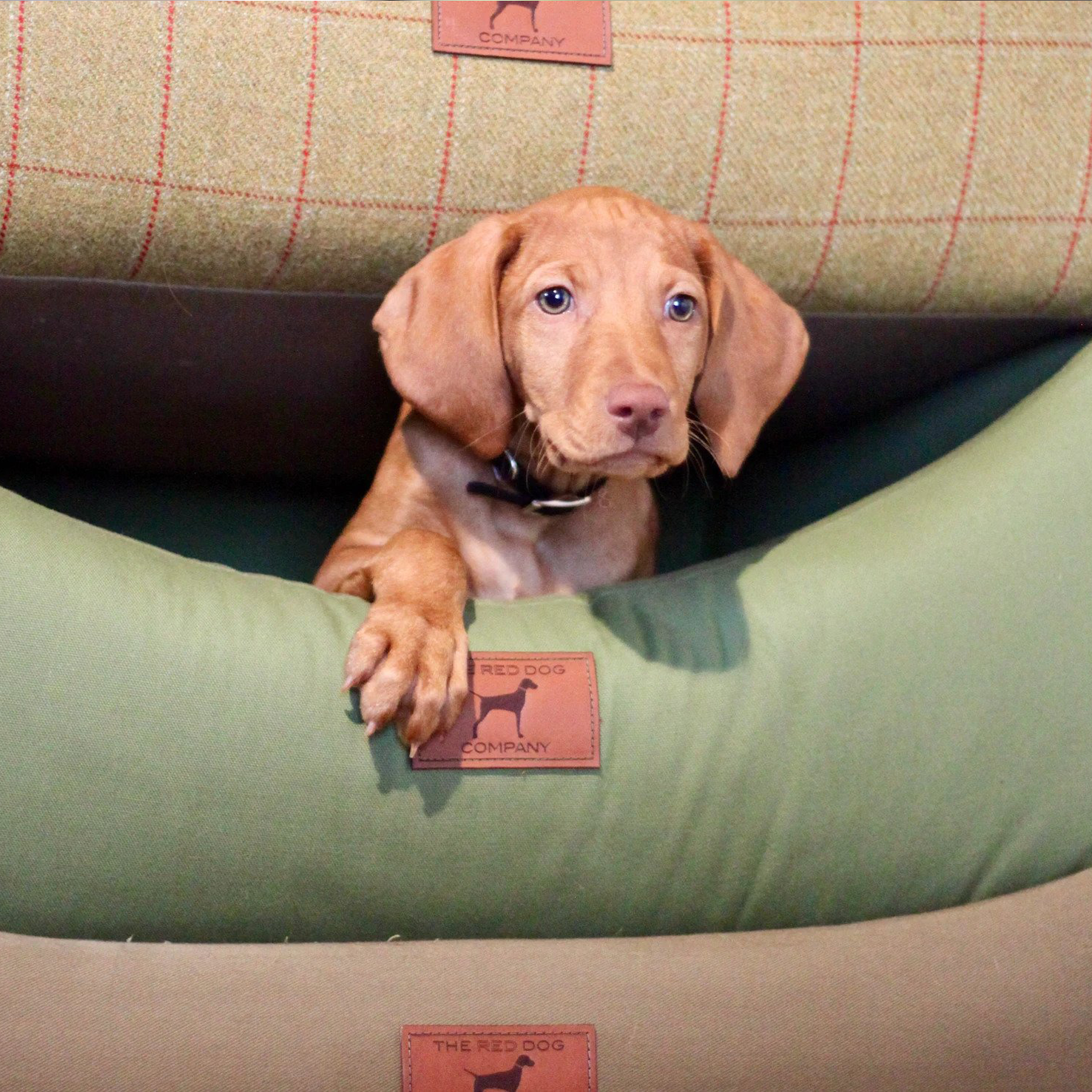Choosing A Bed For A Dog With Arthritis
Dogs spend many hours a day and night in their beds and even more so if they are suffering with arthritis. Their bed needs to be in an easily accessible and draught free, warm part of the house with non slip flooring by the bed. The bed should have easy access in and out. Dogs need to be able to move to get comfortable, perhaps stretching out when resting- so always make sure the bed is big enough for your dog. You could choose a mat that allows them to fully stretch out and move freely to get into a position of comfort. Some dogs may prefer the security and warmth of a bed with sides, just make sure that you’ve sized it appropriately for them to stretch as well as snuggle. Importantly always ensure that the bed is supportive for the joints - a memory foam orthopaedic mattress is ideal in this respect. The mattress needs to be supportive and dense enough so that the dog’s weight does not sink through to the floor after resting there for some time.
Dog Beds For Dogs With Arthritis
At the Red Dog Company we have produced a range of mats and luxury dog beds that are suitable for dogs with arthritis. We have considered their needs and listened to owner’s feedback.
We have a range of sizes of mats for the dog that feels most comfortable when they stretch out. Mats can also be useful in the car, so that your dog is more comfortable on journeys, and not just at home.
Orthopaedic memory foam dog mat
Our beds have a low scalloped frontage, making it easier for arthritic dogs to enter and leave. The firm foam side cushions maintain their shape overtime and allow for ongoing head resting as well as being something comfortable to snuggle against to feel safe and secure.
The mats are made with the same mattress construction as our sided beds. The mattress combines an orthopaedic memory foam upper with a high density foam lower, this combination allows the mattress to mould to the dog and support their weight without allowing them to sink to the floor.
The mattress is protected with a waterproof liner.
The wool fleece provides the perfect topper to the mattress, it is hypoallergenic, soft yet durable and tends to stay remarkably clean. However, all covers - both mattress and side cushion covers, are machine washable (yes, you heard that right! a machine washable dog bed) and we sell spare covers so that you can have one on whilst one is in the wash.
We are proud of the beds and mats, and delighted with the feedback we’ve been given by owners, particularly those with arthritic dogs.
Arthritis in Dogs
Arthritis, which is inflammation of the joints, is a common disease in dogs and can significantly compromise the dog’s wellbeing. The most common form is osteoarthritis, a multi factorial disease with genetics, nutrition and exercise all having a role to play.
Arthritis is more prevalent in the aged dog through wear and tear and secondary to injuries earlier in life. Developmental disease, such as hip and elbow dysplasia, predispose the patient to osteoarthritis and these dogs may present at a younger age. According to the British Veterinary Association, common breeds prone to hip and elbow dysplasia tend to be the medium to larger breeds including the Labrador Retriever, Golden Retriever, Hungarian Vizsla, Border Collie, German Shorthaired Pointer, Goldendoodle, Labradoodle, Rottweiler, German Shepherd dog, Basset Hound, Irish Water Spaniel, Newfoundland and the Bernese Mountain Dog.
What is Osteoarthritis?
In healthy joints, bones are covered in smooth cartilage for easy gliding movement and the joint cavity is filled with thick and viscous joint fluid, that has a cushioning effect. A joint with osteoarthritis will have thinning joint fluid and worn, uneven cartilages that allow bone surfaces to rub- this causes inflammation and pain. Progressively, the joint becomes thickened and stiff as the body produces new bone and movement becomes more painful.
How to tell if your dog has Arthritis
Researchers report that owners describe a range of low level and intermittent changes in behaviour and demeanour as well as subtle changes in gait. At the time owners may not have linked these changes with arthritis and the associated pain, thus resulting in a delay in presenting to the vet. Owners reported a reduced speed of walk, sometimes associated with panting and sometimes with an apparent reluctance to walk the usual distance; perhaps showing reduced agility with some stumbling and being less keen to jump in to the car; some dogs showed weight shifting or a change in gait; being less playful and less keen to get out of bed to go for a walk were also reported symptoms and dogs were described as being sad, withdrawn or even aggressive. These behaviours were not often interpreted as reflecting the dog’s pain. Owners often believe their dog to be stoic and the dog’s pain may not be perceived by the owner, as dogs do not often vocalise their pain. Studies have shown that some owners do recognise changes in their dog but are fearful of seeking veterinary advice, as this may confirm a disease process. Both owners and vets want arthritic dogs to be comfortable and have a good quality of life but sometimes communication between these parties and a lack of trust, can create a barrier.
Managing Osteoarthritis in Dogs
Arthritis is a progressive disease that can not be cured but long term management can be rewarding in slowing the progression of disease and alleviating pain. Management is most successful when instigated early in the disease process. Osteoarthritis can have a significantly negative impact on the dog’s quality of life and therefore, in some cases, their length of life. Owners are also negatively impacted by their dog’s osteoarthritis, with reduced length and speed of walks and through the stress of striving to manage the condition most effectively. A meaningful management program will look at surgical options, if indicated, as well as at pain relief, nutrition and joint supplements, exercise, lifestyle and improvements to their home environment to minimise deterioration.
Pain reliefThis is a very important part of the management of arthritis. Commonly used pain control medications for arthritis in dogs include anti inflammatory drugs (NSAIDS) that reduce inflammation and reduce pain. NSAIDS are often used in combination with other forms of pain relief and joint supplements, together improving the overall effectiveness. Your vet will be able to prescribe appropriate medication and monitor, altering the plan as necessary, to maximise effectiveness.
Exercise
With the degeneration of the normal structure of the joint and it’s associated pain, dogs will have reduced range of motion in their affected joints and will be less inclined to remain active. Therefore, the surrounding ligaments, tendons and muscles become weak. It is important to work with your vet to try to maximise mobility and maintain soft tissue strength, without causing increased inflammation and deterioration within the joint. Some dogs will benefit from exercise in the form of hydrotherapy, which allows a non-concussive form of muscle building and joint movement.
Home modifications
Making some fairly basic modifications in the home can help your arthritic dog. Bear in mind the limitations they may now have, such as reduced strength and therefore increased likelihood of slipping and falling and reduced ability to climb steps. In addition now, more than ever, it is important to provide them with a comfortable and supportive place to rest.
Carpet or non slip rugs and mats can help your arthritic dog from slipping, falling and aggravating their arthritic joints as well as alleviating the anxiety they may feel on less secure surfaces.
Be sure to place their feeding and water station, as well as their beds, in places of the house that are easy for them to access- for instance, without steps or slippery floors to manoeuvre en route. Likewise, making sure there is access to the outside space for toileting purposes that is not difficult and uncomfortable for them to navigate is essential. This may mean creating non slip ramps for them to bypass steps.
Alison Lambert MA VetMB MRCVS
Alison graduated from Cambridge University, in Veterinary medicine and surgery, in 1999. She initially worked in mixed practice before concentrating on domestic animals for the next 16 years. When Alison isn’t working as a vet, she is helping The Red Dog Company make the very best luxury dog beds and accessories available.



